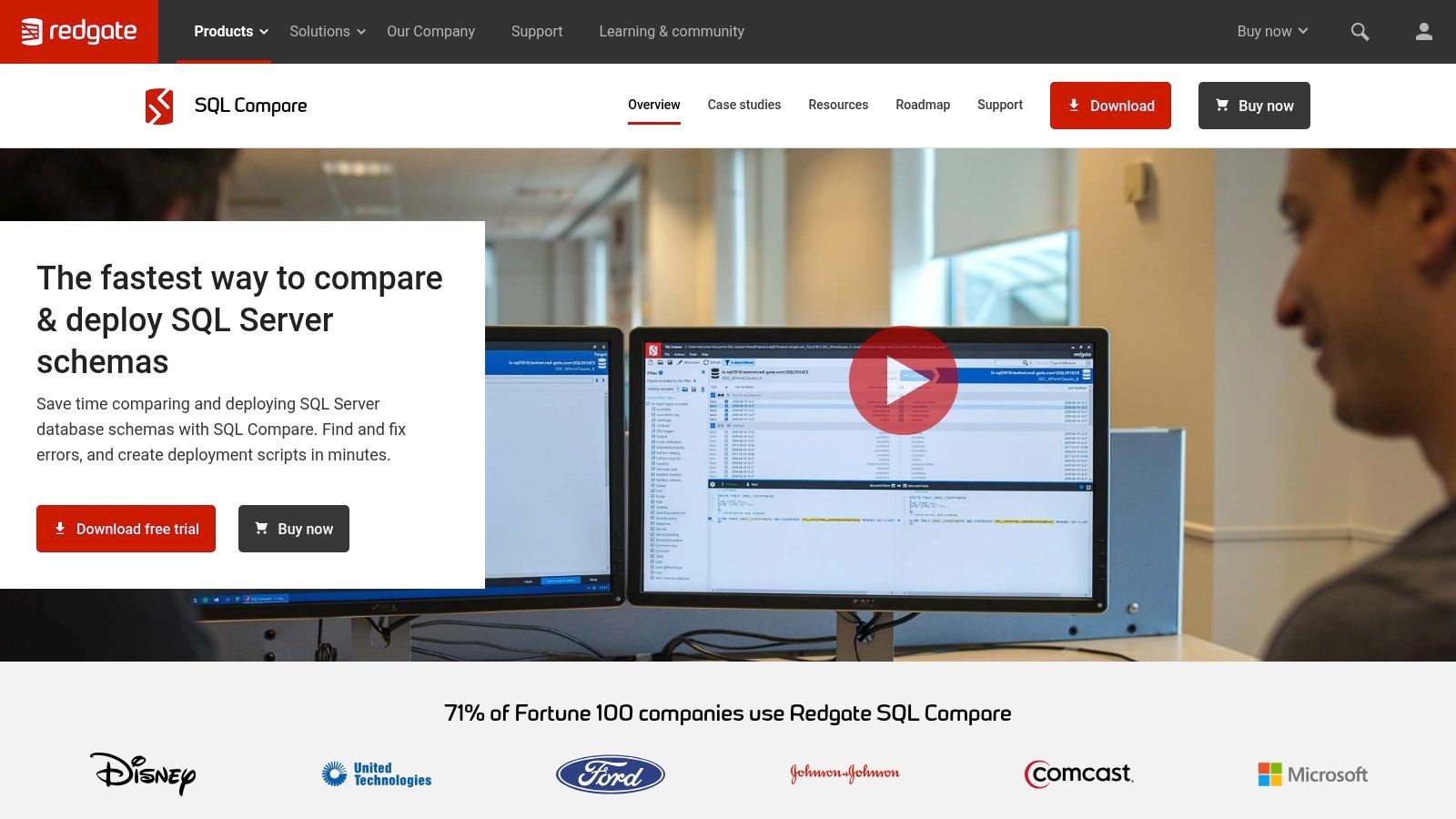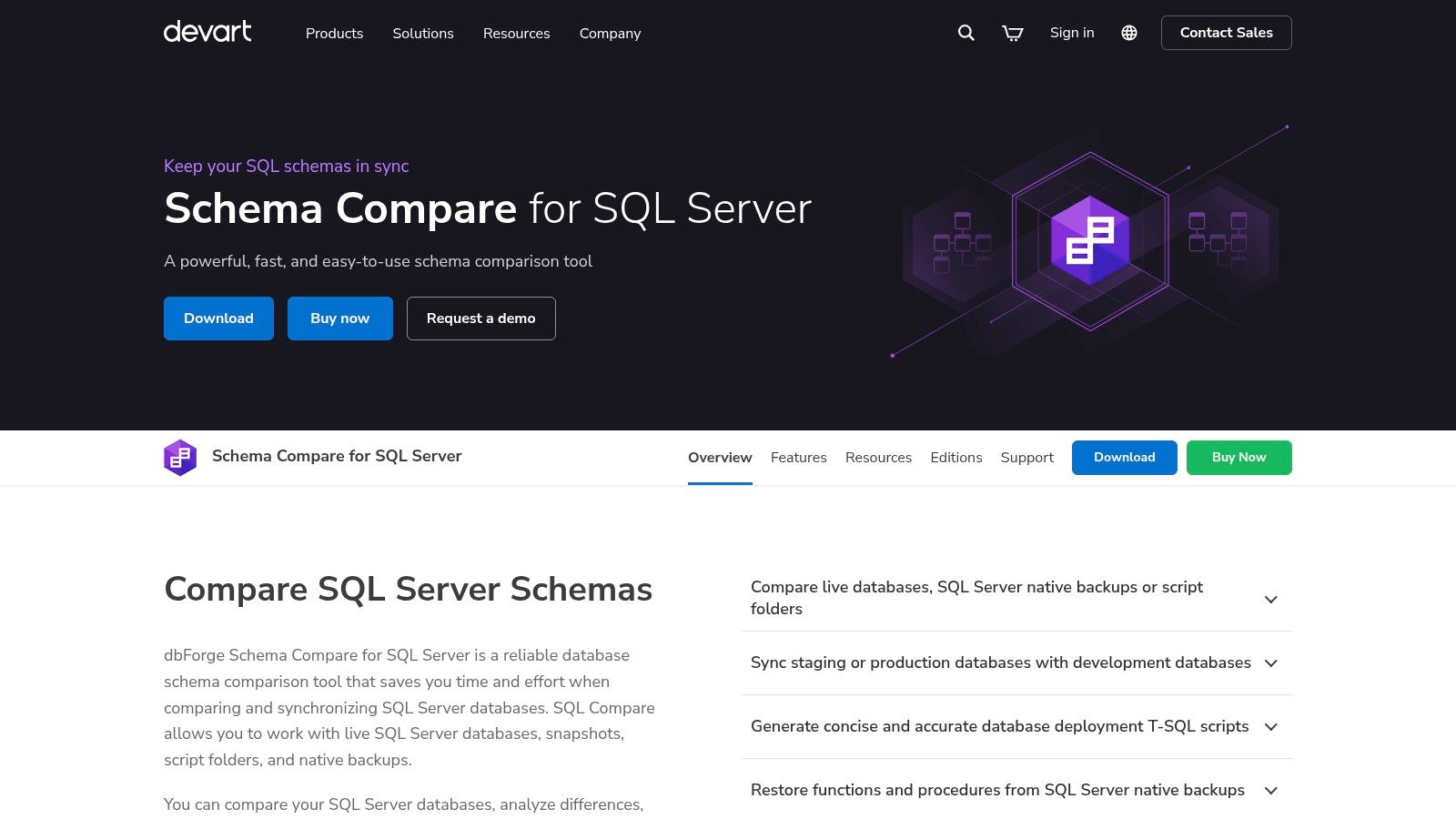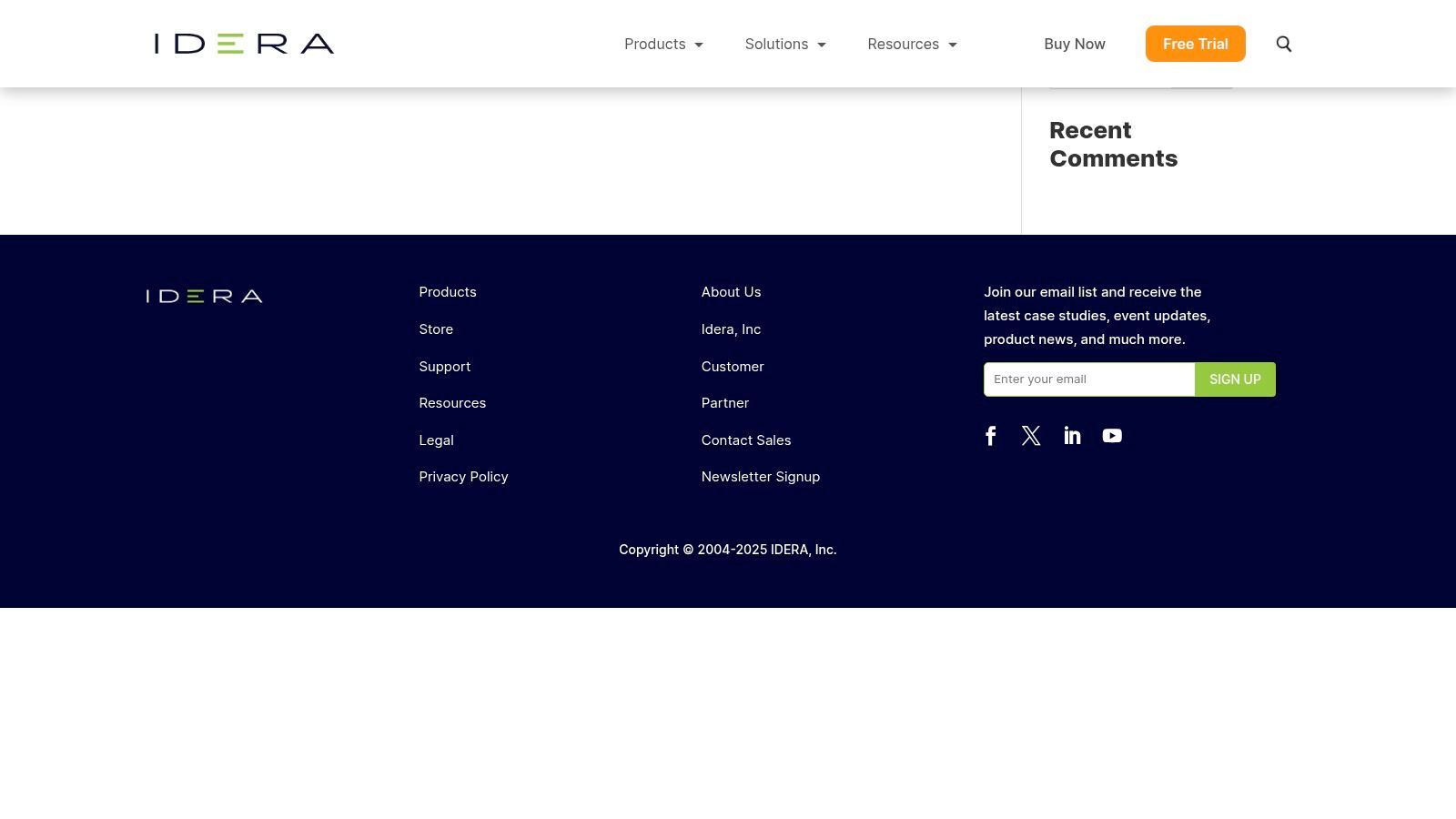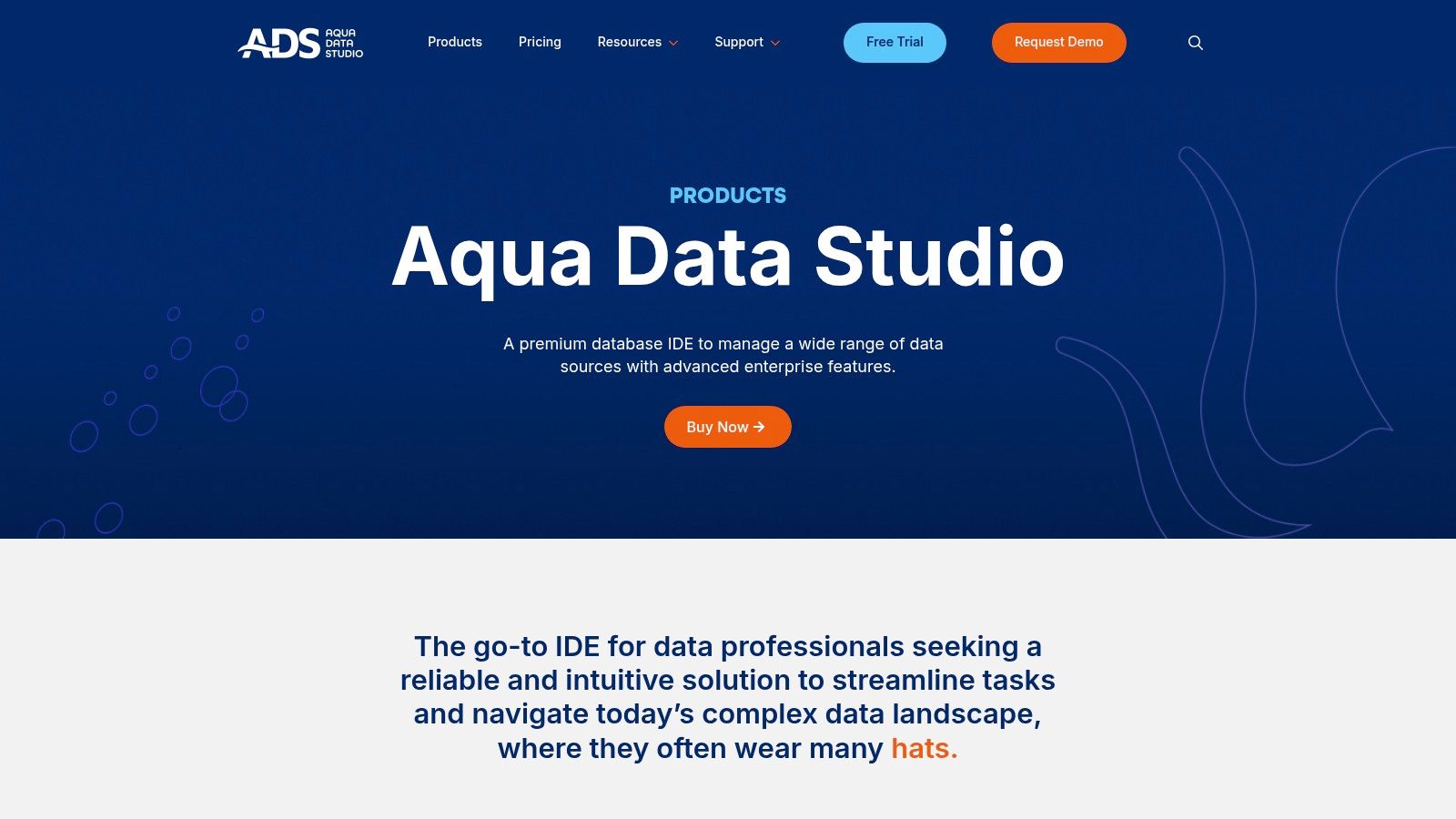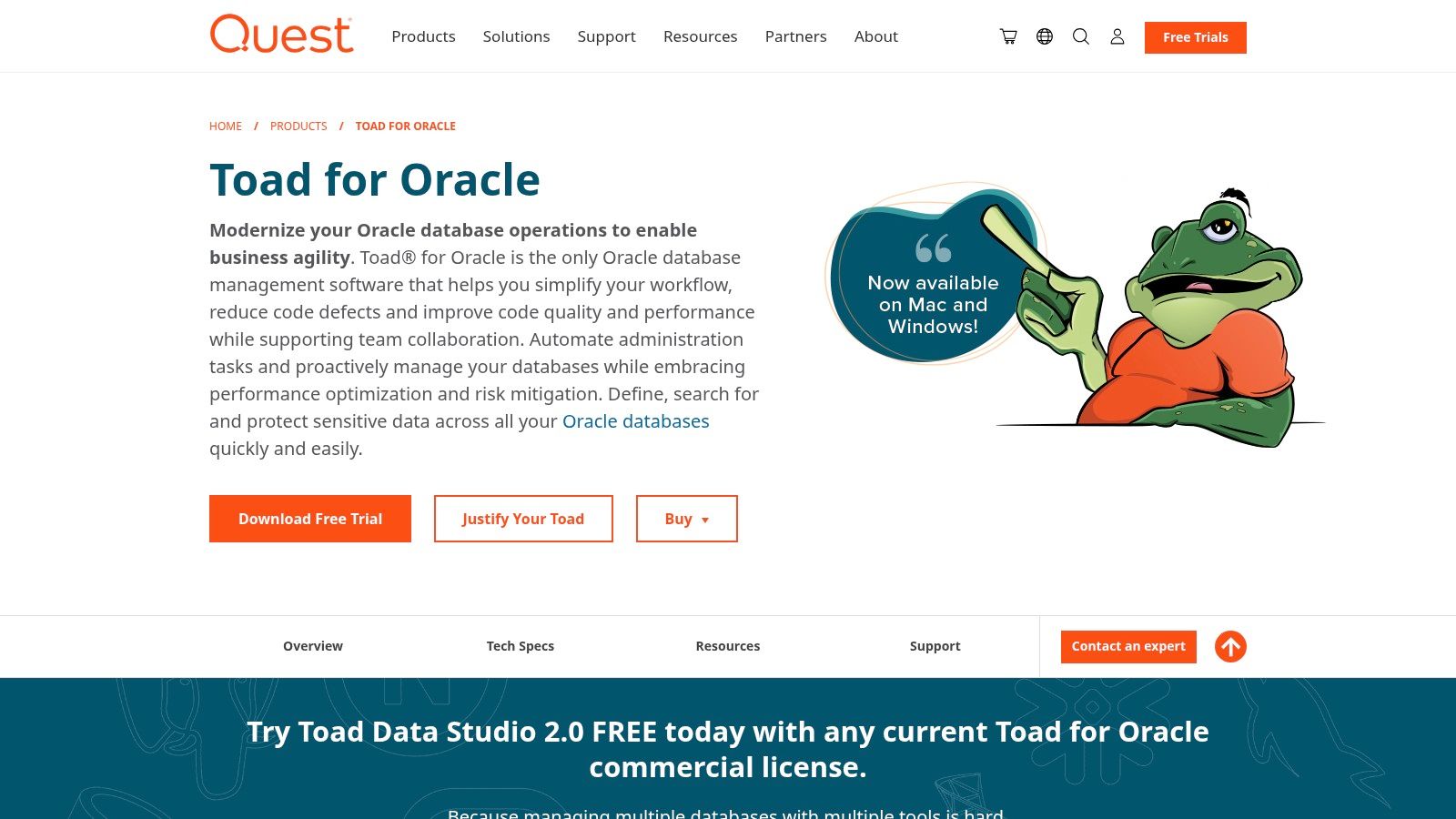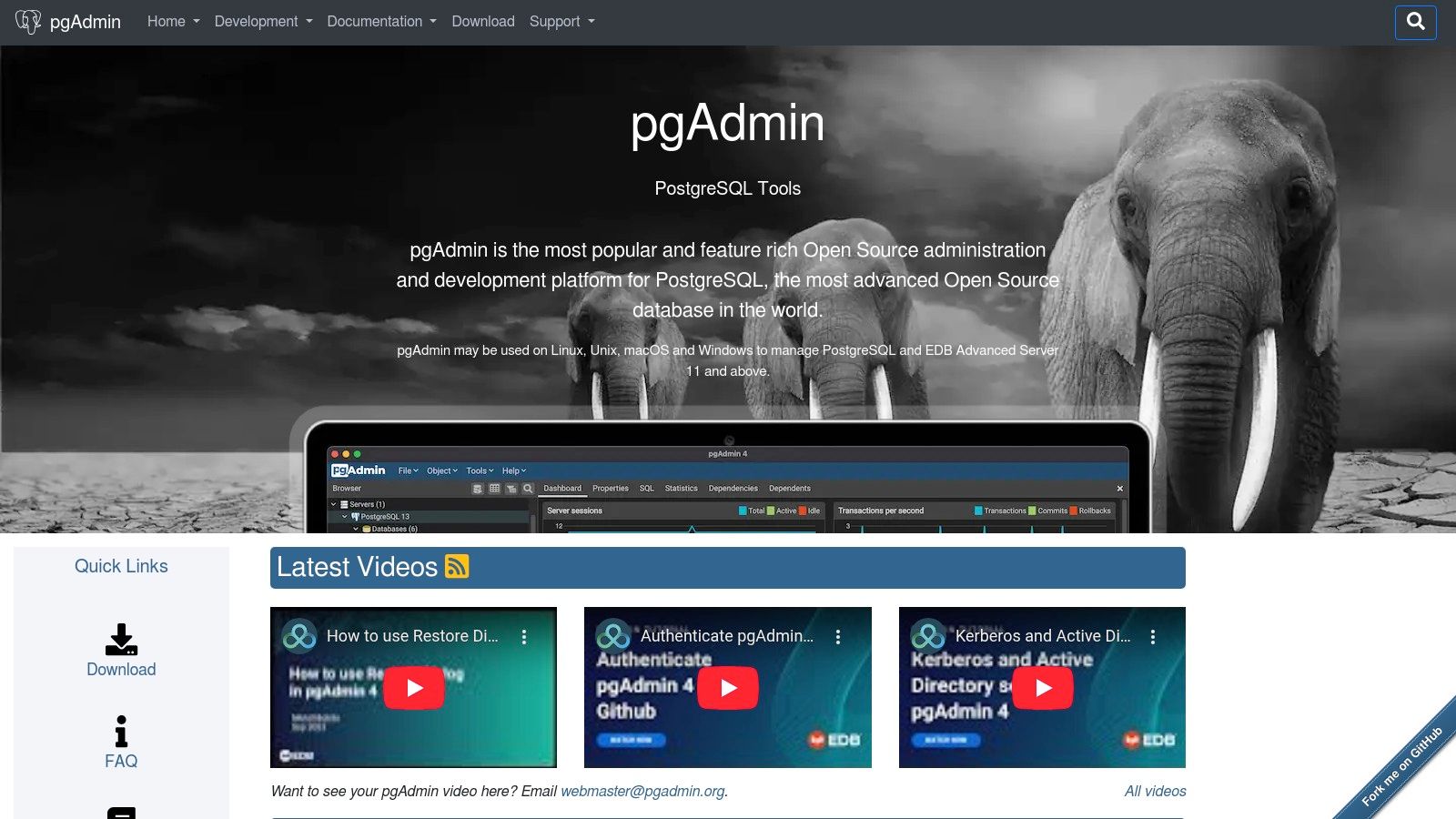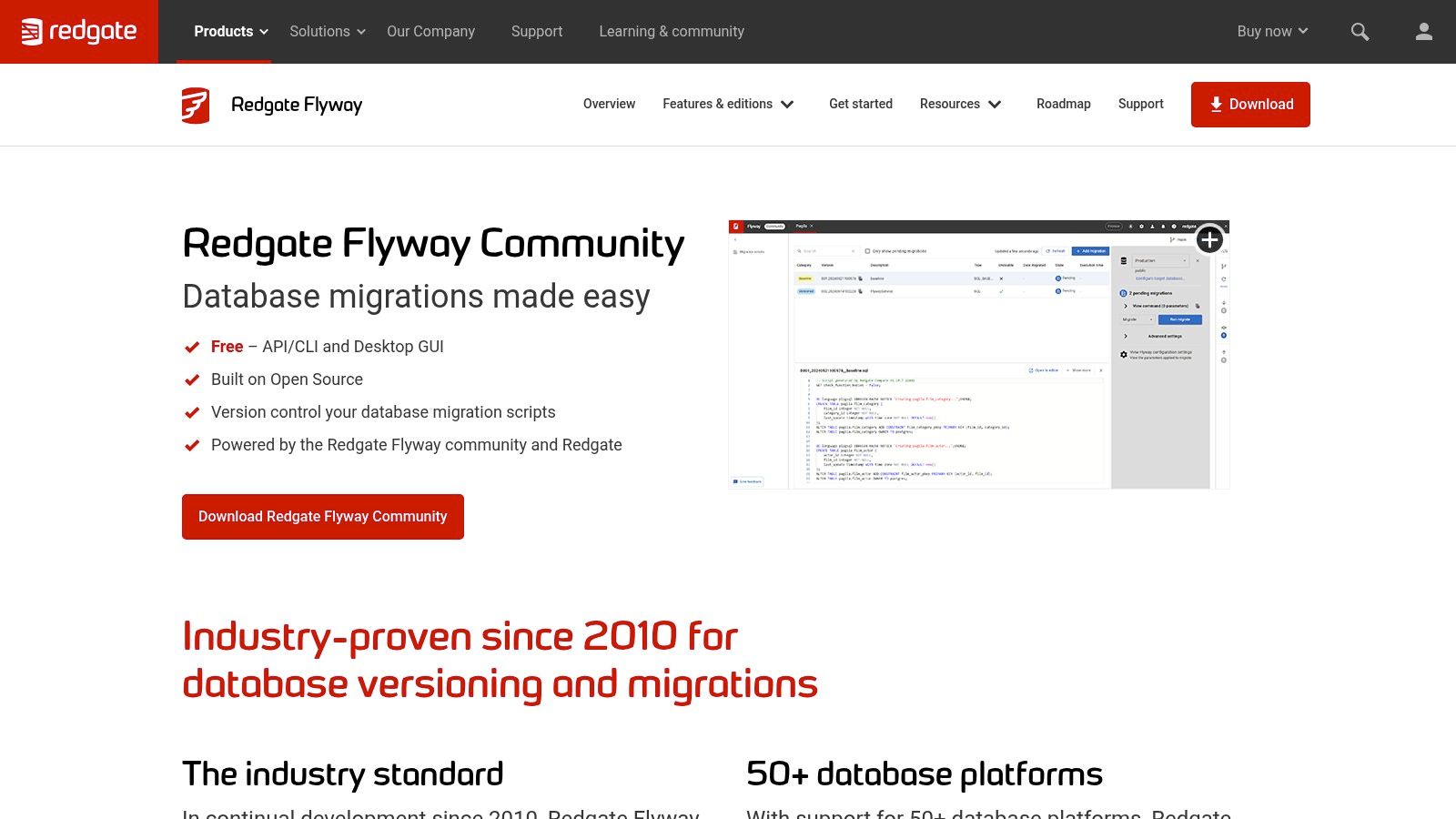Finding the Right Fit: Navigating the World of Database Comparison Tools
Managing and maintaining databases can be a complex undertaking. Schema changes, version control, data migrations, and ensuring consistency across different environments (development, testing, and production) present significant challenges. Manually comparing databases, especially those with numerous tables and stored procedures, is time-consuming and prone to errors. This is where database comparison tools become invaluable. These tools simplify the process of comparing schemas, identifying differences, and generating synchronization scripts, ultimately ensuring data consistency and reliability.
Selecting the appropriate database comparison tool is critical. Several factors influence this decision:
- Supported Database Platforms: Consider compatibility with your database systems (Oracle, PostgreSQL, SQL Server, etc.).
- Database Complexity: The tool should be able to handle the intricacies of your database structure.
- Budget: Options range from free, open-source tools to premium enterprise solutions.
- Required Features: Do you need data comparison, schema synchronization, or version control integration?
An effective tool provides clear reports highlighting discrepancies, offers automated synchronization, and integrates smoothly into your workflow. The choice between a command-line interface for scripting versus a graphical user interface (GUI) for interactive use is another important consideration.
Exploring Database Comparison Tools: Features and Functionality
This guide examines eight leading database comparison tools, providing a detailed analysis of their strengths and weaknesses. We'll explore their features, pricing (if applicable), supported platforms, and ideal use cases. This information will empower you to select the best tool to address your specific database management needs. We'll cover everything from open-source solutions suitable for individual developers to robust platforms designed for enterprise use.
1. Redgate SQL Compare
Redgate SQL Compare stands out as a leading database comparison tool, purpose-built for SQL Server environments. It provides a robust and accurate method for comparing and synchronizing database schemas. This makes it an essential tool for database developers, DBAs, and anyone involved in managing SQL Server deployments. Whether tackling complex database migrations, resolving schema discrepancies, or implementing CI/CD pipelines, SQL Compare streamlines the process and minimizes potential errors.
Redgate SQL Compare goes beyond simply highlighting differences. It allows users to examine changes with granular detail, from table structures and stored procedures to indexes and constraints. This precise control is vital for understanding the full impact of changes before deploying them to a live environment.
Key Features and Benefits
-
Precise Schema Comparison: The tool identifies even subtle differences between database schemas, minimizing false positives that can lead to wasted time and effort.
-
Automated Deployment Scripts: SQL Compare automatically generates SQL scripts for deploying the identified changes. This eliminates manual scripting, thus reducing the risk of human error, especially helpful for complex deployments.
-
Source Control Integration: SQL Compare seamlessly integrates with popular source control systems like Git and SVN, enabling version control and collaborative development for database changes.
-
Command-Line Automation: A robust command-line interface allows for automated deployments and integration with CI/CD pipelines.
-
Broad SQL Server Support: The tool supports various SQL Server versions (2005 to 2022), Azure SQL Database, and SQL Managed Instance, ensuring compatibility across different environments.
-
Intuitive User Interface: SQL Compare presents a clear and visual representation of schema differences, simplifying change management.
-
Robust Deployment Options: It offers transaction rollback capabilities, allowing deployments to be safely reversed if any unexpected issues arise.
Practical Applications
-
Database Migrations: Simplify and automate database migrations to new servers or newer SQL Server versions.
-
Schema Synchronization: Easily keep development, testing, and production environments synchronized.
-
Troubleshooting and Auditing: Quickly pinpoint discrepancies between database schemas for troubleshooting or auditing purposes.
-
CI/CD Integration: Automate database deployments within your CI/CD pipeline for faster and more reliable releases.
Pros and Cons
Here's a quick overview of the advantages and disadvantages:
| Feature | Description |
|---|---|
| Pros: | Highly accurate comparisons, intuitive interface, robust deployments with rollback, excellent support |
| Cons: | Premium pricing, SQL Server specific, some advanced features require additional Redgate tools |
For specific pricing, contact Redgate.
Implementation/Setup Tips
-
Trial Version: Download a trial version from the Redgate website for a hands-on evaluation.
-
Documentation: Refer to the documentation and tutorials on the Redgate website.
-
Command-Line Interface: Utilize the command-line interface for automation and CI/CD integration.
Redgate SQL Compare provides a robust and reliable solution for managing SQL Server database schema changes. The premium pricing should be considered, but the time saved, reduced error risk, and increased efficiency can make it a valuable investment for teams heavily reliant on SQL Server. For specialized, powerful, and dependable SQL Server database comparison and synchronization, Redgate SQL Compare is a strong choice.
2. DbForge Schema Compare
DbForge Schema Compare by Devart is a powerful tool designed to simplify database schema comparison and synchronization. It's a valuable asset for database developers, DBAs, and DevOps specialists looking to improve their workflow, especially when working with various database platforms. These include SQL Server, PostgreSQL, MySQL, and Oracle. This broad cross-platform support, combined with a consistent interface, allows users to manage schema changes across different environments with ease.
Imagine deploying a new feature requiring database updates. Manually comparing and synchronizing schemas across development, testing, and production environments can be tedious and prone to errors. DbForge Schema Compare automates this process. It offers a visual comparison, highlighting schema differences, and generates accurate synchronization scripts. This significantly minimizes the risk of human error and ensures consistent database structure across all environments.
One of DbForge Schema Compare's key strengths is its flexibility. You can create custom comparison templates for recurring tasks, saving you time and effort. Automated synchronization with scheduling further enhances efficiency, particularly for routine deployments. The command-line interface enables seamless integration with CI/CD pipelines, making it ideal for DevOps workflows. You can integrate it with your automated build process to ensure database schema changes deploy automatically alongside application code updates.
While DbForge Schema Compare provides a robust set of features at a more affordable price than some competitors, it does have potential drawbacks. The interface, while feature-rich, can sometimes feel cluttered. Performance can also be a concern with extremely large and complex schemas. Some users have noted occasional stability issues during complex comparisons. However, the tool's overall effectiveness and cost-effectiveness often outweigh these issues.
Key Features
- Cross-platform support (SQL Server, PostgreSQL, MySQL, Oracle)
- Visual comparison with difference highlighting
- Schema comparison template creation
- Automated synchronization and scheduling
- Command-line interface for CI/CD integration
Pros
- Affordable pricing
- Consistent interface across multiple platforms
- Flexible comparison and filtering options
- Strong DevOps integration
Cons
- Potentially cluttered interface
- Performance issues with very large schemas
- Occasional stability issues reported
You might be interested in: Our Sitemap for other helpful resources.
DbForge Schema Compare earns its place on this list due to its comprehensive feature set, cross-platform support, and affordability. While the interface and performance might present minor challenges, its automation strengths in schema comparison and synchronization make it a valuable tool for effectively managing database deployments. Explore its features and pricing on their website: https://www.devart.com/dbforge/sql/schemacompare/
3. Idera DB Change Manager
Idera DB Change Manager stands out as a powerful, enterprise-grade solution for managing database schema and data changes across diverse platforms. If your business operates in a regulated industry or manages complex database environments, its focus on compliance and robust comparison capabilities makes it a strong contender. This tool goes beyond basic schema comparisons, enabling you to track and synchronize data changes—a critical feature for preserving data integrity and consistency.
Practical Applications and Use Cases:
-
Regulatory Compliance: For businesses in regulated sectors like finance and healthcare, DB Change Manager's audit trails and compliance reporting features are essential for demonstrating adherence to industry standards. It provides documented proof of every database modification, crucial for audits.
-
Database Deployments: Mitigate deployment risks by using DB Change Manager to compare and synchronize changes between development, testing, and production environments. This promotes a smoother deployment process and minimizes the risk of unexpected errors.
-
Configuration Drift Prevention: The automated alert system notifies you of any deviations from established configurations, helping you maintain consistency across your database landscape. This is particularly valuable in dynamic environments with multiple teams making changes.
-
Data Migration & Integration: When migrating data between databases or integrating different systems, DB Change Manager helps identify and reconcile data discrepancies, ensuring a seamless and accurate migration.
Features and Benefits
-
Cross-Platform Support: DB Change Manager supports Oracle, SQL Server, Sybase, and DB2, allowing management across various database environments.
-
Comprehensive Comparison: It compares both schema and data, offering a complete view of database changes.
-
Automated Alerts: The system proactively identifies configuration drift and potential issues.
-
Audit Trails: Detailed records of all database modifications are maintained for compliance reporting.
-
Data Masking: Sensitive data is protected during comparisons and synchronization.
-
Role-Based Permissions: This feature facilitates secure collaboration among team members.
Pros and Cons
Pros:
- Strong security and compliance features
- Robust data comparison capabilities
- Enterprise-ready with team collaboration features
- Good scalability for large database environments
Cons:
- Steeper learning curve compared to simpler tools
- Enterprise pricing model can be expensive (contact Idera for specific pricing)
- The interface might appear less modern than some alternatives
- Resource-intensive for complex comparisons, requiring sufficient server resources
Implementation/Setup Tips
While the interface may require some adjustment, Idera offers comprehensive documentation and support to assist with implementation. Allocate sufficient training time for your team. Given its resource requirements, ensure your servers possess adequate processing power and memory for smooth comparisons and synchronizations.
Comparison with Similar Tools
While tools like Liquibase or Flyway primarily focus on schema migrations, Idera DB Change Manager provides a broader scope, encompassing both schema and data changes. This makes it a more comprehensive choice, particularly for environments prioritizing data integrity and compliance. However, if your needs are limited to schema migrations, a simpler tool may suffice.
Website and Conclusion
Website: https://www.idera.com/productssolutions/sqlserver/dbchangemanager
Idera DB Change Manager delivers a robust and comprehensive solution for managing database changes in demanding enterprise environments. Its strong emphasis on compliance and data integrity makes it a valuable investment for organizations needing strict control and auditability of database modifications. However, carefully consider the learning curve and cost before committing.
4. ApexSQL Compare
ApexSQL Compare is a dedicated tool for comparing and synchronizing SQL Server database schemas. It helps identify and resolve differences between databases, making it a valuable resource for SQL Server developers and administrators managing schema changes.
This tool excels at detailed schema comparisons, considering even complex object dependencies. This helps prevent unexpected issues during synchronization. ApexSQL Compare offers customizable synchronization options, letting users choose which changes to apply. It also generates preview scripts before execution, giving you control over database updates and minimizing risks.
For automation and CI/CD integration, ApexSQL Compare offers a command-line interface. The schema snapshot feature enables comparisons against earlier database states, giving insights into the schema's history. Integration with source control systems like TFS, Git, and SVN further enhances collaborative development.
Practical Applications
-
Database Development: Developers can use ApexSQL Compare to track schema changes between development and testing databases, ensuring consistency and reducing deployment errors.
-
Database Administration: DBAs can compare production databases with backups or staging environments to identify and fix schema drift, maintaining database integrity.
-
CI/CD Integration: The command-line interface enables automated schema synchronization within CI/CD pipelines, promoting consistent deployments.
Pros
-
User-Friendly Interface: The intuitive workflow simplifies complex comparisons and synchronizations.
-
Good Performance: ApexSQL Compare efficiently handles large databases.
-
Flexible Licensing: A free edition is available for basic tasks, with paid options for professional use.
-
Strong SQL Server Optimizations: The tool is designed to leverage SQL Server features for optimal performance.
Cons
-
SQL Server Only: The tool is specifically for SQL Server, limiting its use in multi-platform environments.
-
Advanced Features Require Additional Tools: Some advanced functions require other ApexSQL tools.
-
Free Edition Limitations: The free version has restrictions, making it unsuitable for most professional tasks.
Pricing and Technical Requirements
ApexSQL Compare offers various licensing options, including perpetual licenses and subscriptions. Pricing details are available on the ApexSQL website. The tool requires access to a SQL Server instance and specific .NET Framework versions. Consult the official documentation for detailed system requirements.
Implementation Tip
Always use the preview feature to review the synchronization script before implementing significant changes. This helps verify changes and prevent data loss or corruption. For further information on related tools, see our sitemap.
Unlike generic database comparison tools, ApexSQL Compare focuses specifically on SQL Server, allowing for tighter integration and better handling of SQL Server-specific objects. This specialized approach makes ApexSQL Compare a powerful tool for SQL Server schema management.
Website: https://www.apexsql.com/sql-tools-compare.aspx
5. Aqua Data Studio
Aqua Data Studio, by Aquafold (now part of Idera), is a robust tool for database professionals who need more than just comparison features. While it excels at comparing schemas and data across over 40 database platforms, it’s a comprehensive Integrated Development Environment (IDE) that simplifies various database tasks. This makes it especially useful for those managing diverse database environments.
Consider migrating data from an on-premise Oracle database to a cloud-based MySQL instance. Aqua Data Studio simplifies this by allowing visual schema comparisons, identifying differences, and even generating the necessary SQL scripts for the migration. For business analysts tracking data warehouse changes, Aqua Data Studio can compare data snapshots across different times, highlighting additions, deletions, and modifications for trend analysis and data validation.
Beyond comparison, Aqua Data Studio provides a visual query builder with IntelliSense for faster SQL development, ER diagramming for visualizing database relationships, and a suite of database administration tools. Its visual analytics and charting capabilities empower users to explore data within the application, eliminating the need for separate reporting tools.
Key Features and Benefits
Here's a breakdown of Aqua Data Studio's key features:
- Multi-platform database schema and data comparison: Compare schemas and data across a wide range of database systems.
- Visual query builder and SQL editor with IntelliSense: Write SQL queries faster and more efficiently.
- ER diagramming and visual data analysis: Visualize database relationships and explore data through charts and graphs.
- Database administration tools for multiple platforms: Manage and administer various database systems from a single platform.
- Visual analytics and charting capabilities: Gain insights from data with built-in visualization tools.
Pros and Cons
Let's weigh the advantages and disadvantages of using Aqua Data Studio:
Pros:
- Broad database platform support: Works with a large number of database systems, ideal for businesses using diverse technologies.
- All-in-one solution: Provides a complete set of tools for database management, development, and analysis.
- Strong visualization capabilities: Presents complex data in an easy-to-understand visual format.
- Regular updates: Ensures compatibility with the latest database versions and adds new features.
Cons:
- Higher cost: Its comprehensive features come with a higher price tag than dedicated comparison tools. Contact Idera for pricing.
- Complex interface: The numerous features can be overwhelming for new users.
- High resource requirements: Needs significant system resources to run smoothly.
- Less specialized comparison: While robust, its comparison features might not offer the same level of granular control as dedicated comparison tools.
Implementation and Setup
Download the correct version for your operating system from the Aquafold website. While the interface may initially appear complex, the built-in tutorials and documentation are valuable resources. Start with the comparison features and gradually explore other functionalities.
Final Thoughts
Aqua Data Studio is a powerful tool for those needing a single platform for managing and analyzing data across multiple database platforms. Its broad capabilities justify the higher cost for users who will utilize its all-in-one approach. However, if your needs are strictly data comparison and you have a limited budget, a dedicated comparison tool may be more cost-effective.
6. Toad For Oracle
Toad for Oracle by Quest Software is a comprehensive solution for Oracle database development and administration. It offers powerful schema comparison capabilities within a broader suite of tools. While not solely dedicated to database comparison, its specialized Oracle focus makes it valuable for Oracle-centric teams.
Toad for Oracle's Schema Compare utility allows database professionals to carefully compare and synchronize schema objects between different Oracle databases. Think of tasks like migrating schema changes from development to testing, or verifying database integrity after upgrades. Toad simplifies these tasks, highlighting differences in a user-friendly interface and providing automated synchronization.
Beyond comparisons, Toad offers a robust environment for PL/SQL development. It includes features for database health checks, performance diagnostics, code analysis, and automation through scripting. This makes it a centralized platform for Oracle professionals. If your team primarily works with Oracle databases, Toad can streamline workflows and improve overall efficiency.
Features
- Oracle-Specialized Schema Comparison: Supports in-depth comparisons of a wide array of Oracle schema objects.
- Comprehensive PL/SQL Development Environment: Aids in code development, debugging, and optimization.
- Database Health Check and Performance Diagnostics: Proactively identifies and addresses potential issues.
- Code Analysis and Best Practice Enforcement: Maintains high code quality and adherence to established standards.
- Automation Capabilities Through Scripting: Automates repetitive tasks to boost efficiency.
Pros
- Deep Oracle Expertise: Toad is tailored for Oracle environments, offering specialized support and performance tuning.
- Comprehensive Solution: It provides a complete set of tools for managing and maintaining Oracle databases.
- Community and Documentation: A robust community and extensive documentation offer valuable resources.
- Regular Updates: Toad receives regular updates to ensure compatibility with the latest Oracle versions.
Cons
- Oracle Focus: Primarily focused on Oracle, with limited cross-platform support for other database systems.
- Price Point: It has a higher price point than dedicated comparison tools. Contact Quest Software for pricing.
- Learning Curve: The extensive functionality can present a learning curve for new users.
- Resource Intensive: Requires substantial system resources, particularly when working with large databases.
Implementation/Setup Tips
- Resource Allocation: Ensure sufficient system resources for installation and smooth operation.
- Documentation: Explore the tutorials and documentation available on the Quest website.
- Community Forums: Leverage the community forums for support and best practices.
Comparison With Similar Tools
Tools like dbForge Schema Compare offer cross-platform database comparison. However, Toad’s strength is its deep Oracle integration and comprehensive toolset. If your work revolves around Oracle and you need more than just schema comparison, Toad is a valuable solution.
Toad for Oracle is a powerful, specialized solution. Its comprehensive features, deep Oracle integration, and focus on efficient database management make it a strong asset for teams working extensively with Oracle. While the price and resource requirements are higher than some alternatives, the added benefits often justify the investment for Oracle-focused teams.
7. pgAdmin
pgAdmin is the leading open-source administration and management tool for PostgreSQL. It offers a robust set of features, making it a valuable resource for developers and database administrators. One key feature is its powerful schema comparison tool. Imagine needing to migrate your database: pgAdmin lets you compare your existing schema to the target schema, visually highlighting differences. This foresight prevents potential errors and ensures a smooth transition.
Beyond schema comparison, pgAdmin offers a full graphical interface for managing all aspects of your PostgreSQL databases. This includes creating and modifying tables, executing queries, and analyzing performance with graphical explain plans. pgAdmin streamlines these administrative tasks, making database management more efficient.
Working with Queries and Performance
pgAdmin's query tool, coupled with the ability to visualize query plans, helps optimize database performance. You can even deploy pgAdmin on the server-side for easier access. Its extensible plugin architecture also allows customization to match your workflow.
For developers working with PostgreSQL-backed applications, pgAdmin simplifies schema evolution. By comparing schema versions, you can generate synchronization scripts to update your database automatically. This reduces errors and saves valuable development time. For a broader look at different software categories, check out this article about Category Sitemap.
Features and Benefits
Here's a breakdown of pgAdmin's key features and advantages:
- PostgreSQL schema comparison and difference visualization: Quickly identify discrepancies between schemas.
- Complete PostgreSQL administration interface: Manage all aspects of your database in one place.
- Query tool with graphical explain plans: Optimize query performance for better efficiency.
- Server-side pgAdmin deployment option: Enhanced accessibility and management.
- Extensible plugin architecture: Customize pgAdmin to fit your specific needs.
Pros and Cons
Like any tool, pgAdmin has its strengths and weaknesses:
Pros:
- Free and open-source: No licensing costs, making it budget-friendly.
- Native PostgreSQL optimization: Superior performance and stability.
- Active community and regular updates: Stays current with PostgreSQL features and security patches.
- Cross-platform compatibility: Available on Windows, macOS, and Linux.
Cons:
- PostgreSQL only: Not suitable for other database systems.
- Comparison features: Less sophisticated than some commercial options.
- Interface: Can feel somewhat dated.
- Performance with large schemas: Can be slower for large-scale deployments.
Getting Started
Website: https://www.pgadmin.org/
pgAdmin is a powerful tool for anyone working with PostgreSQL. While it may not have every feature of commercial alternatives, its comprehensive feature set, open-source nature, and tight PostgreSQL integration make it a strong choice for many.
8. Flyway
Flyway by Redgate offers a different approach to database management. Instead of comparing database schemas directly, it focuses on version-controlled migrations. While not a traditional comparison tool, this migration-based system makes it a powerful asset for managing database schema changes and ensuring synchronization across various environments. This is especially useful for teams using DevOps and CI/CD practices.
Instead of generating a diff, Flyway uses migration scripts (written in SQL or Java) to track and apply incremental changes. These versioned scripts allow for easy rollback and repeatable deployments across development, testing, and production.
Features
- Version-Based Database Migration: Track changes through versioned scripts written in SQL or Java.
- Automatic Schema Version Tracking: Flyway automatically tracks applied migrations, ensuring consistent schema versions.
- Flexible Deployment Options: Integrate Flyway via command-line, API, Maven / Gradle plugins, or the provided UI.
- Broad Database Support: Supports over 20 database platforms for wide compatibility.
- Undo Migrations (Commercial Editions): Provides greater control over changes, available in commercial editions.
Pros
- Excellent DevOps and CI/CD Integration: Flyway’s command-line interface and build tool integrations simplify its use in automated deployments.
- Version Control Friendly: Migration scripts are treated as code and can be stored in systems like Git, improving collaboration.
- Community Edition Available: A free and open-source community edition provides core features.
- Cross-Platform Support: Extensive database support makes it versatile for various technology stacks.
Cons
- Not a Direct Comparison Tool: Flyway doesn’t offer side-by-side schema comparisons like dedicated tools.
- Requires a Migration-Based Workflow: Teams used to direct comparison tools may need to adjust their workflow.
- Advanced Features Require a Commercial License: Features like undo migrations are paid features.
- Steeper Learning Curve: The migration-based approach may be initially more challenging to learn.
Website: https://flywaydb.org/
Pricing: Free Community Edition. Commercial editions (Teams, Enterprise) offer additional features, with pricing available from Redgate.
Technical Requirements: Requires Java (JRE) and the specific database driver.
Implementation/Setup Tips
- Begin with the Community Edition to learn the basics.
- Keep migration scripts logical and concise.
- Use a consistent naming convention for scripts.
- Integrate Flyway into your CI/CD pipeline.
Flyway excels in a DevOps workflow. Imagine multiple developers working on a project. Each can create and version their database changes as migration scripts. These scripts are reviewed, merged, and automatically applied during deployment. This ensures consistent database updates across environments, reducing manual errors and improving deployment reliability. Flyway is a valuable tool for managing complex database schemas.
Head-to-Head Comparison of 8 Database Tools
| Tool | Core Features ★ | Unique Selling Points ✨ | Value Proposition 💰 | Target Audience 👥 |
|---|---|---|---|---|
| Redgate SQL Compare | Precise SQL Server schema diff; auto script generation; source control integration | Intuitive visual diff & rollback capability | Premium price for high accuracy | SQL Server DBAs & developers |
| dbForge Schema Compare | Cross-platform comparison; visual diff; templating; automation | Affordable alternative with DevOps focus | Competitive pricing with robust features | DBAs, DevOps, multi-database teams |
| Idera DB Change Manager | Schema & data diff; audit trail; automated alerts; role-based permissions | Enterprise-grade compliance & security | Higher cost but ideal for regulated environments | Enterprise teams & compliance focused |
| ApexSQL Compare | Detailed SQL Server diff; customizable sync; snapshot comparisons; CLI integration | Free edition option & SQL Server-specific optimizations | Flexible licensing for diverse project sizes | SQL Server professionals |
| Aqua Data Studio | Multi-platform IDE; visual query builder; admin tools; ER diagrams; analytics | All-in-one solution for 40+ databases | Higher price for comprehensive functionality | Heterogeneous DB administrators |
| Toad for Oracle | Oracle-specific diff; PL/SQL development; performance diagnostics; code analysis | Deep Oracle expertise and robust Oracle toolset | Premium cost with extensive Oracle capabilities | Oracle database professionals |
| pgAdmin | PostgreSQL admin; native diff visualization; query tool; plugin extensibility | Free, open-source & native PostgreSQL integration | Zero cost with community support | PostgreSQL DBAs & enthusiasts |
| Flyway | Migration-based version control; script automation; CLI/API/Plugin support | Seamless DevOps integration with versioned migrations | Free community edition with scalable enterprise options | DevOps teams & version control experts |
Making the Best Choice for Your Database Needs
Finding the perfect database comparison tool can feel overwhelming. Each option offers a unique set of features and capabilities. The key is to carefully evaluate your specific needs and resources to find the perfect fit. Whether you're a tech enthusiast exploring different databases, a business professional managing crucial data, or a digital marketer tracking campaign performance, selecting the right tool can significantly impact your efficiency. Even remote workers relying on cloud databases or streaming services ensuring seamless content delivery benefit from an effective database comparison solution.
When comparing tools like Redgate SQL Compare, dbForge Schema Compare, Idera DB Change Manager, ApexSQL Compare, Aqua Data Studio, Toad for Oracle, pgAdmin, and Flyway, consider these important factors:
Database Platform Compatibility
Ensure the tool supports your specific database systems, such as SQL Server, Oracle, PostgreSQL, or MySQL. Some tools are designed for a single platform, while others offer broader compatibility.
Team Size and Collaboration
If your team will be using the tool, look for features that support collaborative workflows. These might include version control integration (like Git) and shared project settings.
Budget and Licensing
Database comparison tools range from free, open-source options to commercial products with various pricing tiers. Free tools may work well for individuals or small projects, while enterprise solutions provide more advanced features and dedicated support. Evaluate your needs against your budget.
Feature Set
Prioritize the features that are most important for your workflow. Consider whether you need automated synchronization, schema comparison, data comparison, reporting capabilities, or integration with other DevOps tools.
Ease of Use and Learning Curve
Think about the tool's user interface and how long it will take your team to learn how to use it effectively. Some tools have intuitive graphical interfaces, while others may rely on command-line interfaces or scripting.
Integration and Compatibility
Check if the tool integrates with your existing development environment, version control system, and CI/CD pipelines. Seamless integration will streamline your workflow and minimize manual intervention.
Implementation and Getting Started
Research the installation process, documentation, and available support resources for each tool. Clear documentation and a simple setup can save you valuable time.
Key Takeaways
Here are the main points to remember when choosing a database comparison tool:
- Define Your Requirements: Before evaluating any tools, clearly outline your database platforms, team size, budget, and essential features.
- Try Before You Buy: Take advantage of free trials or community editions to test the tools and see if they meet your needs.
- Consider Long-Term Costs: Factor in licensing fees, maintenance costs, and potential training expenses when making your final decision.
Choosing the right database comparison tool empowers your team to manage and synchronize database changes effectively. This ensures data consistency, accuracy, and efficiency in your database workflows. Whether you're a seasoned Database Administrator (DBA), a developer, or a DevOps specialist, the right tool can simplify complex tasks and streamline your workflow. Ultimately, this leads to improved productivity and reduced risk. By carefully considering your specific needs and evaluating the available options, you can select the tool that best aligns with your requirements and supports your database management goals.






